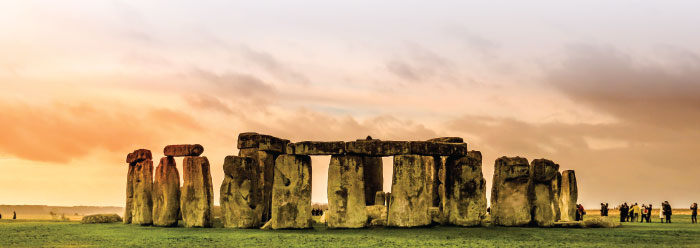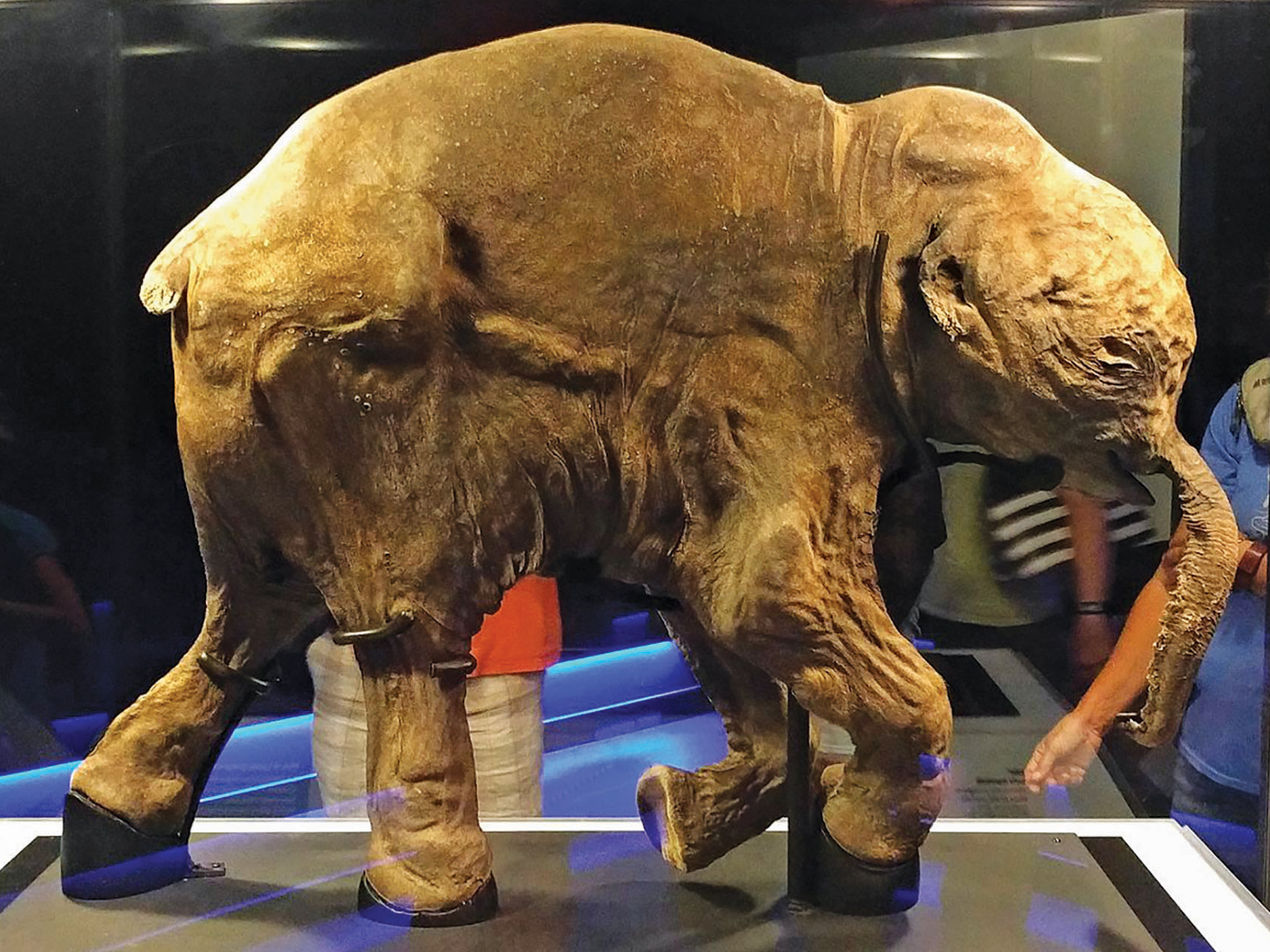Archaeologists have been using ground-penetrating radar and other techniques to intensively study underground areas all around Stonehenge, a mysterious circle of stones in England that secular historians believe was constructed many thousands of years ago. Recently the archaeologists discovered an unexpected array of buried stone structures, leading them to once again rewrite their Stonehenge origin theories. Bible believers also struggle to understand when and why Stonehenge was constructed. Forgotten clues from history answer these questions with much greater surety than secular speculations have mustered.1
First, we can reject the stone artifact’s reported ages, ranging from 6000 to 2500 B.C., for at least two reasons. Secular archaeologists regularly select dates simply because they align with the evolutionary timescale of human history, but Institute for Creation Research scientists, along with other researchers, have amply demonstrated why that timescale has failed. Enlightenment era secularists concocted it, and their disciples continue to systematically reject any dates that don’t fit, protecting their timescale with what amounts to mere circular reasoning.2 Another reason to reject their reported ages is that they dismiss written records detailing Britain’s past and similar records from several ancient European nations that trace royal ancestries all the way back to Japheth son of Noah.3 With ancient documents including the Bible out of the way, evolutionists have felt free to invent a version of history that excludes God and even humanity’s own historical records.
A free online, high-quality translation of The Chronicle of the Early Britons offers the second clue to unraveling Stonehenge.4 Many of The Chronicle’s place names correspond to modern names, and many of its people occur in other ancient documents. It calls Stonehenge the “Giant’s Ring,” and native Welshmen still refer to Stonehenge as Cor y Cewri, which means “the Giants’ Ring.”5,6
The Chronicle tells how King Ambrosius’ royal advisor Merlin, accompanied by Ambrosius’ brother and troop commander Uther Pendragon, helped build Stonehenge. Merlin became famous for devising a clever way to transport monolithic stones from “Killara” to their current position in England.7,8 Historian Bill Cooper recently cross-referenced Killara with a modern map of Ireland, finding a match with the town Kildare—just west of Dublin. Its Gaelic name was Chill Dara. The king of Wales and his people were convinced the stone arrangements helped heal the sick, so they wanted to reconstruct the magical Irish monument closer to home.
All agree that Stonehenge’s stones were obtained from faraway sources. According to The Chronicle, giants who had originally inhabited Ireland brought the stones from Spain (though another ancient account cites remote Africa) and set them up on a hilltop in Killara. The Chronicle also describes how Britain’s founder Brutus, of Trojan descent, and his entourage disposed of giants when he founded the place now named after him: Britain.9 The Chronicle also mentions a dragon encounter. Modern secularists scoff at this mention of giants and the dragon, fueling their opinion that The Chronicle is more fantasy than history, but that’s partly because they already deride Scripture and any record that supports it. The Chronicle’s references to giants actually substantiate the Welsh document for those familiar with biblical references to giants living after the Flood, like Goliath, and with the Bible’s clear references to “dragons.”10 Like the Neandertal peoples and whole nations such as the Ammonites and Philistines, giant human varieties have probably gone extinct.
The recent archaeological work indicates that Stonehenge was apparently part of a much larger complex than previously thought. Workers from the Stonehenge Hidden Landscapes Project have discovered 17 distinct underground stone structures spread across an area equaling 1,250 soccer fields.11 At nearby Durrington Walls, they imaged “super henge,” perhaps the largest stone circle in the world. Back when Stonehenge was thought to be a lonely stone circle set on a stark plain, it was a bit challenging to match it to The Chronicle’s description. But the newfound array of structures fits quite well with the document’s description of how King Ambrosius beautified the area.
With wisdom and but little labour did he [Merlin] remove the stones to the ships. And so were they brought to Mount Ambri. And to that place did Ambrosius summon all his earls and his barons, and all the sacred scholars of the realm, to seek their counsel how he might beautify the place and adorn it….And having all things prepared, Ambrosius commanded Merlin to assemble the stones as they had been at Killara. And this he did, and all acknowledged that wisdom is better than strength.5
When did this construction occur? They must have built Stonehenge after the Flood, because according to Scripture Noah’s Flood obliterated the globe’s surface, implying forces that would utterly destroy even massive stone monuments.12 Historian Manley Pope translated The Chronicle in the 19th century and assigned many dates to the kings’ reigns, beginning with Brutus in 1074 B.C. and ending with Cadwaladr in 660 A.D. Bill Cooper more recently used historical sources both within and outside The Chronicle to deduce 1104 B.C. for Brutus and 633 A.D. for Cadwaladr, plus adjusted dates for the many intervening kings, including Ambrosius’ grandson Arthur.3 Dates like these help set King Ambrosius in time and thus the building of Stonehenge itself.
The Chronicle says, “And in those days a star of wondrous size appeared to Uther, having but a single tail.”13 Pope wrote, “In the catalogue of comets given by Shelburne at the end of his Manilius, a comet is described…of A.D. 504, crowned with a dragon, [and] is more probably the same that is said to have been seen by Uther.”14,15
A final clue corroborates this timing. The Romans famously occupied Britain from 43 to 410 A.D. During that time, they renamed most of England’s stone works, ancient castles, and religious sites, including Old Sarum, located within seven miles of Stonehenge. The Romans Latinized Old Sarum to Sorviodunum. But they did not rename Stonehenge or build a Roman shrine there, as they did at other key locations. Why do we have Roman names for so many monuments but not England’s most famous one? Well, according to dates taken from historical sources, Stonehenge was built almost a century after the Romans departed.
So, secular scientists have guessed that Stonehenge may have been constructed between 3000 and 2000 B.C., but this merely follows a pre-set evolutionary timescale. They assert that Stonehenge is a “prehistoric” monument, meaning that it was constructed prior to any written history. But if The Chronicle—which is a written history—describes Stonehenge, then their “prehistoric” conjecture is as false as their evolutionary age assignments. A date of around 504 A.D. for the construction of Stonehenge is much more recent than 2500 B.C., but it is backed by written history. By setting aside secularists’ bias against the Bible and other documents that confirm the Bible, we find that ancient writings, modern archaeology, and Genesis history mesh quite well.
References
- Even back in 1135, the Earl of Huntingdon wrote about Stonehenge, “No one has been able to discover by what mechanism such vast masses of stone were elevated, nor for what purpose they were designed.” Forester, T., transl. 1853. The Chronicle of Henry of Huntingdon. London: Henry G. Bohn, 7. Huntingdon must have been unfamiliar with The Chronicle of the Early Britons, as is consistent with its omission from his sources as listed on his Wikipedia page.
- For an example of this circular reasoning, see Hebert, J. 2014. The Ice Age and the Flood: Does the Ice Age Really Show Millions of Years? Dallas, TX: Institute for Creation Research.
- Cooper, B. 1995. After the Flood. Chichester, UK: New Wine Press.
-
This document gives a history of the Britons, an ancient Celtic people, that begins a thousand years or so before the arrival of the Romans in England. Bill Cooper translated a 15th-century Welsh copy of the 12th-century original. See Cooper, W. R., transl. 2002. The Chronicle of the Early Britons. An annotated translation of Jesus College MS LXI. Posted on www.annomundi.com/history/chronicle_of_t
he_early_britons.htm. - Ibid, 43.
- The Welsh call themselves Cymru (“goom ree” with a trilled “r”) after their progenitor Gomer, one of Noah’s grandsons (Genesis 10:2).
- Medieval French novelist Chrétien de Troyes retold stories of King Arthur, adding Lancelot and a Holy Grail to his version, and spawned an industry of Arthurian fiction that continues to the present day. These many stories shroud the historicity of the real people on which they are loosely based.
- Modern examples of low-tech monolith transport include Wally Wallington’s sand ballast and lever techniques he is using to build a Stonehenge replica at his home in Flint, Michigan, a recent study in the Proceedings of the National Academy of Sciences showing that an artificial ice road makes sliding blocks seven times easier, and a report in the Journal of Archaeological Science showing how 18 people moved a 4.4-ton rock by “walking” it using three ropes.
- Brutus’ co-leader Corineus, after whom Cornwall was named, killed a giant probably named Gawr Madoc (“Madoc the Giant” in Welsh) in hand-to-hand combat by throwing him over a ledge into the sea at Plymouth Ho in Devon. See The Chronicle, 10.
- Thomas, B. 2013. Dinosaurs and the Bible. Dallas, TX: Institute for Creation Research.
- Kaplan, S. Envisioning an even bigger Stonehenge: New maps reveal 17 previously unknown structures at the site of the British monument. The Washington Post. Posted on washingtonpost.com September 12, 2014, accessed September 17, 2014.
- Morris, J. D. 2012, The Global Flood. Dallas, TX: Institute for Creation Research.
- The Chronicle, 131.
- Pope, M. 1862. A History of the Kings of Ancient Britain, from Brutus to Cadwaldr. London: Simpkin, Marshall, and Co., 206.
- Many references in this article are available for free online, including the book that Pope referenced: Sherburne, E. 1675. The Sphere of Marcus Manilius. London: Nathaniel Brooke, 198.
* Mr. Thomas is Science Writer at the Institute for Creation Research.











